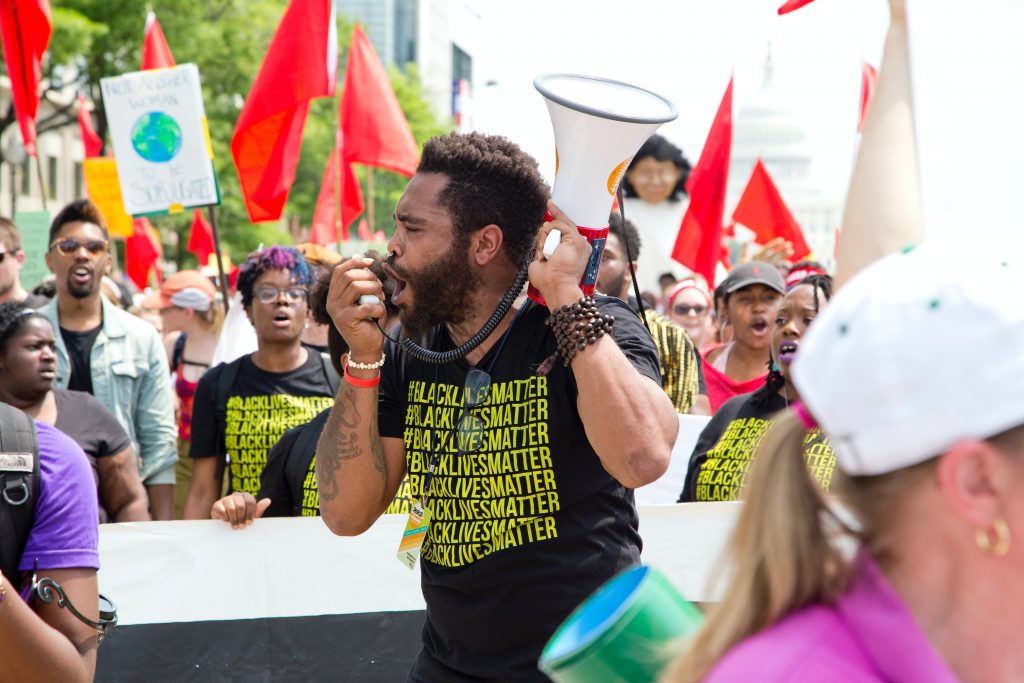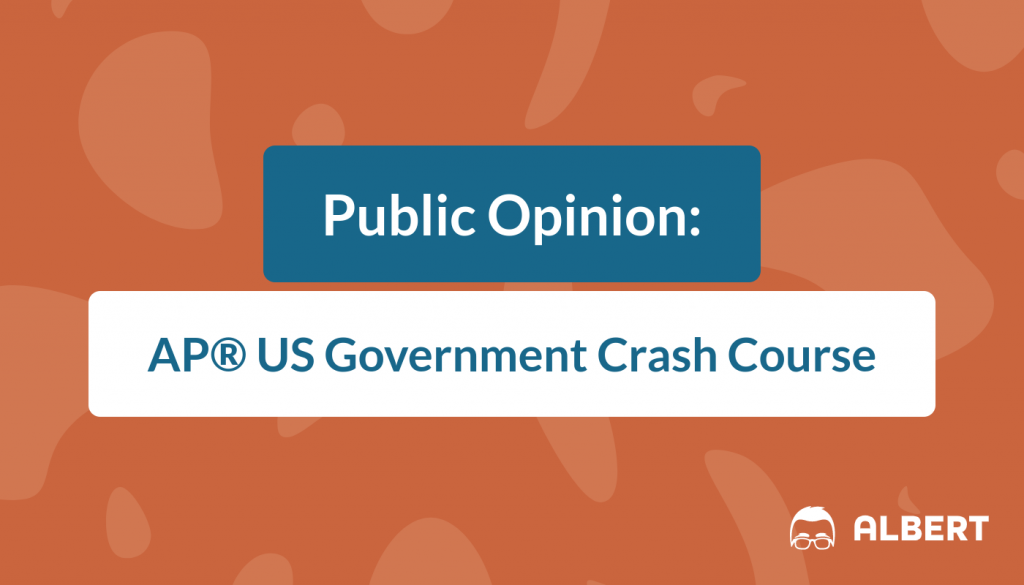Public opinion is a pretty simple concept, but it is important to have a proper understanding of it for the AP® US Government & Politics exam.
Today, we measure public opinion mostly through polling—taking small, representative samples of the population and quizzing them about their views on political issues, public policy and candidates via neutral questions.
You might not be all that surprised to learn that Americans don’t particularly care for politics all that much—they’re much more concerned with jobs and money issues—and these concerns color their opinions about politics quite a bit.
What Exactly Is Public Opinion?

Public opinion is a political science term that measures how citizens feel about their leaders, candidates for office, issues and institutions that control the laws and government.
Political leaders gauge public opinion to find out how much support there is for their policies, as well as to find out what issues are on voters’ minds. Sometimes government officials need to know if the voters will follow laws that are passed—and polling is a good way to find out.
As mentioned, pocketbook issues are of the most importance to voters, and thus the state of the economy and jobs can often sway public opinion, as well as elections. When economic conditions are good, the incumbent party wins; when they are bad, the incumbent party loses.
This was proven true again in 2008, when Barack Obama (D) was elected over John McCain (R) as the economy headed into a deep recession under then-president, Republican George W. Bush. Two years later, Democrats were trounced in the midterm elections, losing control of the House of Representatives as the economy continued to hobble along.
How Do Political Opinions Form?
A dynamic known as political socialization typically determines how a person arrives at his or her political views. Family typically determines people’s values, and thus their concerns, party loyalties and sense of trust in their government. People with wealth and education are also more likely to be involved in politics than poorer, less-educated people—a fact that has a significant impact on public policy and the results of elections.
How Opinion Data Is Used—and by Who
These days it is relatively easy for pollsters to gather public opinion data. Telephones, television, radio and the Internet are ways to shape, as well as measure, public opinion. Political groups use this data to uncover voting patterns, make projections about where the economy is headed, and even to develop fundraising strategies.
Most parts of the government use opinion data. The president’s staff monitors his or her popularity and influence and the impact of presidential media appearances—such as the State of the Union address. Likewise, members of Congress use polling to gather data on support for proposed bills, the popularity of existing legislation and—yes—their images.
Public opinion about the president tends to go in waves. When a president is first elected, he has a honeymoon period of about two or three months where his approval rating comes close to two-thirds of the population. Once his policies and actions begin to be debated, though, the approval rating tends to drop along partisan lines. Then, the president’s rating waxes and wanes with the tide of the economy.
How Polls Are Conducted, and Its Effects
Polls have been conducted to monitor public opinion since the Franklin Roosevelt administration, at the onset of the Great Depression. George Gallup—after whom the now-famous institute is named—used demography and statistics to track the public’s moods.
There is only one instance of polling incorrectly predicting the winner of a presidential election—in 1948, when pollsters believed Thomas E. Dewey would defeat the sitting president, Harry Truman. (This is where the famous, “Dewey Defeats Truman” headline comes from.)
The drawback to polling is that leaders tend to focus on it when crafting legislation or proposing ideas—sometimes at the expense of pressing action that is needed in an area of public policy. After all, the public, as the Founders anticipated, aren’t too well-versed in the issues. Thus, important policy changes needed in areas like immigration and taxes have been avoided.
Polling also tends to discourage unknown candidates from running for office or raising money. The media tends to follow candidates with high polling data more closely, and donors want to give candidates who actually have a chance of winning their money.
Why don’t we look at a sample free-response question on public opinion and see how we’d answer it on the AP® US Government & Politics exam? This one is from 2011.
A Sample US Government & Politics Free-Response Question (FRQ)
Public opinion polls are a way to link the public with elected officials. Members of Congress often use polls to understand the views of their constituents, but they must also pay attention to other political considerations.
1. Identify two characteristics of a valid, scientific, public opinion poll.
2. Explain why each of the following enhances the influence of public opinion on the voting decisions of members of Congress.
A. Strong public opinion as expressed in polling results
B. Competitive re-elections
3. Explain why each of the following limits the influence of public opinion on the voting decisions of members of Congress.
A. Legislators’ voting records
B. Party leadership
This question is very straightforward. For (a) we need to mention that a valid and scientific public opinion poll takes a representative sample of the citizenry and asks them neutral questions.
For (b) we have to provide two examples of how Congress is influenced by the results of polls. Strong public opinion affects members’ votes because they are unlikely to take a stance on legislation that is contrary to the vast majority of their constituents’ beliefs. This ties into the second answer, as competitive reelection campaigns are likely to encourage members of Congress into voting the way their constituents want even more, so they can be returned to office.
As far as (c) goes, we should note that the voting records of legislators are often monitored by interest groups that can provide lots of campaign cash and firepower—friendly or otherwise—to advance or harm the legislator’s career and goals. The priorities of interest groups are often at odds with public sentiment.
Another point to make is that, when a candidate is in the party leadership, or is being pressured by the leaders of his party, he is more likely to vote the ‘party line,’ even if it is against the wishes of his constituents. This is because party leaders also control access to funds and decide which legislators get placed on which committees. And party loyalty is a prerequisite for favorable treatment.
The Wrap Up
You need to remember a few key things. First, political leaders are highly reliant on public opinion polls for almost every decision that they make. Second, voters’ opinions are mostly influenced by two their upbringing and the state of the economy. And finally, voters aren’t all that tuned into politics—so their opinions on legislation might not be in line with the wisest policies.
Good luck on the AP® US Government & Politics exam.
Photo by Cherie Cullen [Public domain], via Wikimedia Commons
By the way, you should check out Albert.io for your AP® Government review. We have hundreds of AP® Gov practice questions written just for you!








